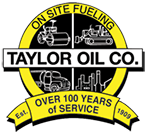Quarterly Driver Training Tips – Is there such thing as too much driver training? Possibly. Some experts say that assigning too much training can ultimately lose its effectiveness over time. This often happens when fleets engage in monthly training assignments for their drivers, whereby they assign a block of training each month and give drivers a certain amount of time to complete it.
Assigning safety training monthly across the board could be seen as counterproductive, as it’s not really an effective strategy for enhancing driver knowledge, workplace culture or fleet safety. It may be better to engage in quarterly training instead.
Just dropping work and content into someone’s lap and walking away isn’t an effective form of education. There has to be some give and take. You have to be able to review what happens afterwards, make plan adjustments, fill gaps, and involve your drivers.
To maximize training effectiveness, you must assess the effect over time so you can make wise decisions based on them. If the training worked great and solved a problem, that’s wonderful. But often times it doesn’t achieve much at all. How do you know the training is working if you just keep assigning work without assessing the outcome?
Plus, not all drivers develop at the same pace. Some may enjoy learning new stuff each month, while others find it to be a burden. Still other drivers need additional time to assimilate new skills and knowledge and are overwhelmed when bosses pile on the monthly assignments.
When something is required each and every month, it starts to be a chore, and leads to boredom and push back.
How Can This Be Handled Better?
So how can you go about it better? Is there a better way to structure ongoing safety improvement programs that actually yield results? We think so.
First off, you should approach this as a monthly activity rather than a training class. While you can incorporate training into it, be sure to add activities that add support to that training. Offer a quarterly cycle of monthly activities that have a central theme. You could structure it like this:
- 1st month – training assignment in topic area with traditional online course
- 2nd month – survey to get feedback from drivers on real world experiences
- 3rd month – customized content related to the topic, such as a supporting video
By incorporating all these elements, you can lead a more engaging program where drivers are more invested. The training has to “stick” after all, or what’s the point?
By doing training on a quarterly schedule, the pace allows drivers to digest the content and adjust their habits accordingly. Now you have more time to assess the results and make adjustments as needed for the future.
Better engagement with drivers leads to better retention rates and safety records, and isn’t that the end goal?
Contact Taylor Oil
Taylor Oil makes sure all of our drivers are regularly trained to ensure efficient, safe delivery of our products. To learn more, contact us today.


